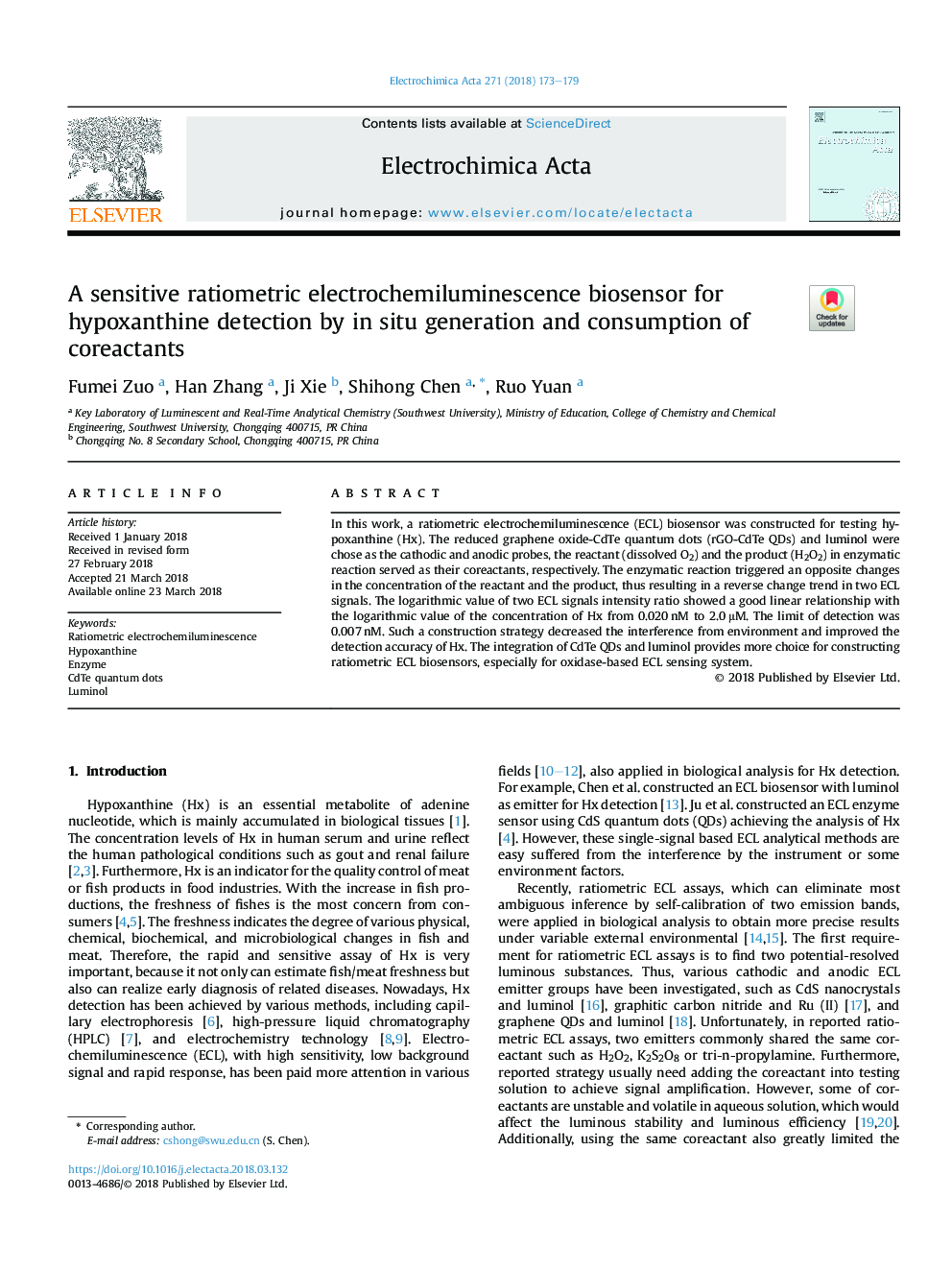| Article ID | Journal | Published Year | Pages | File Type |
|---|---|---|---|---|
| 6603236 | Electrochimica Acta | 2018 | 7 Pages |
Abstract
In this work, a ratiometric electrochemiluminescence (ECL) biosensor was constructed for testing hypoxanthine (Hx). The reduced graphene oxide-CdTe quantum dots (rGO-CdTe QDs) and luminol were chose as the cathodic and anodic probes, the reactant (dissolved O2) and the product (H2O2) in enzymatic reaction served as their coreactants, respectively. The enzymatic reaction triggered an opposite changes in the concentration of the reactant and the product, thus resulting in a reverse change trend in two ECL signals. The logarithmic value of two ECL signals intensity ratio showed a good linear relationship with the logarithmic value of the concentration of Hx from 0.020â¯nM to 2.0â¯Î¼M. The limit of detection was 0.007â¯nM. Such a construction strategy decreased the interference from environment and improved the detection accuracy of Hx. The integration of CdTe QDs and luminol provides more choice for constructing ratiometric ECL biosensors, especially for oxidase-based ECL sensing system.
Related Topics
Physical Sciences and Engineering
Chemical Engineering
Chemical Engineering (General)
Authors
Fumei Zuo, Han Zhang, Ji Xie, Shihong Chen, Ruo Yuan,
